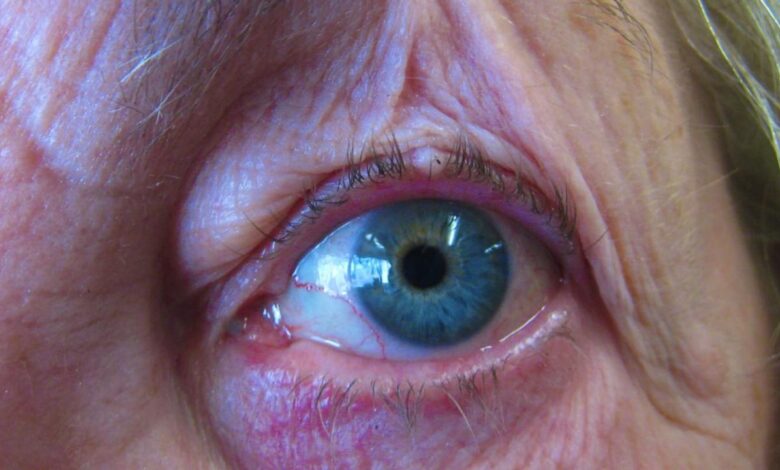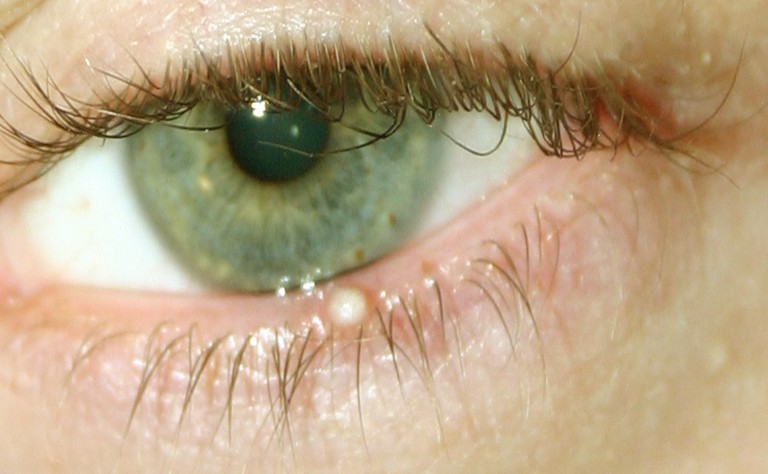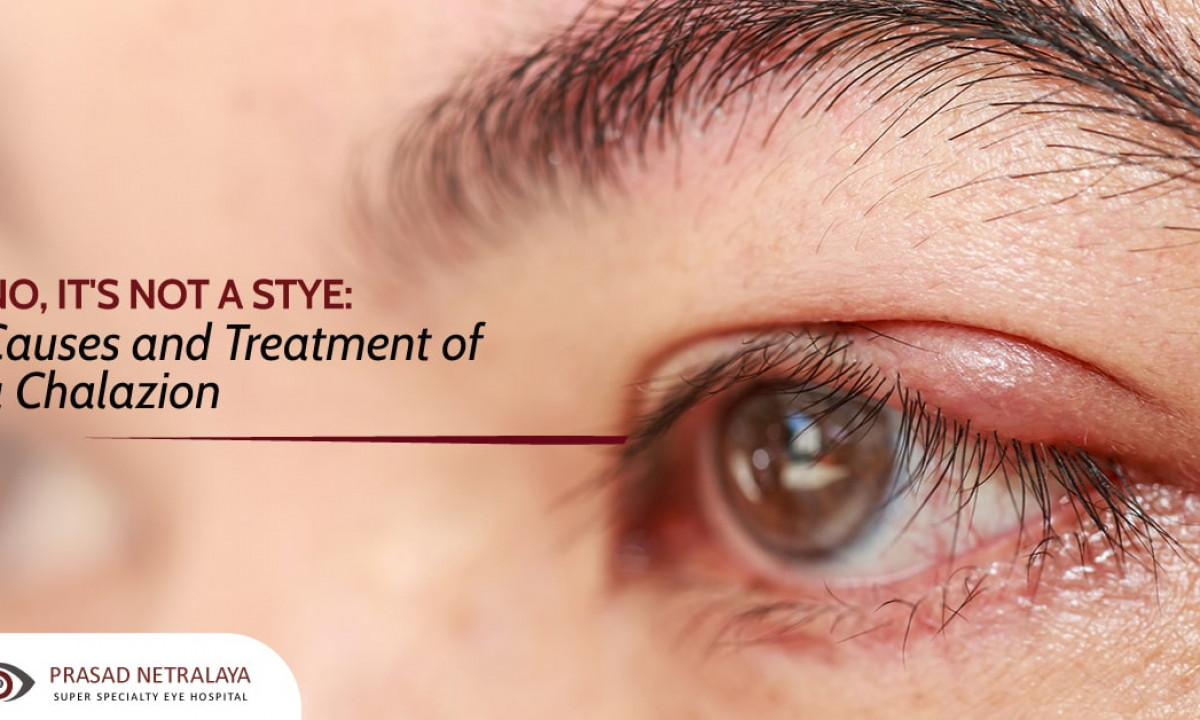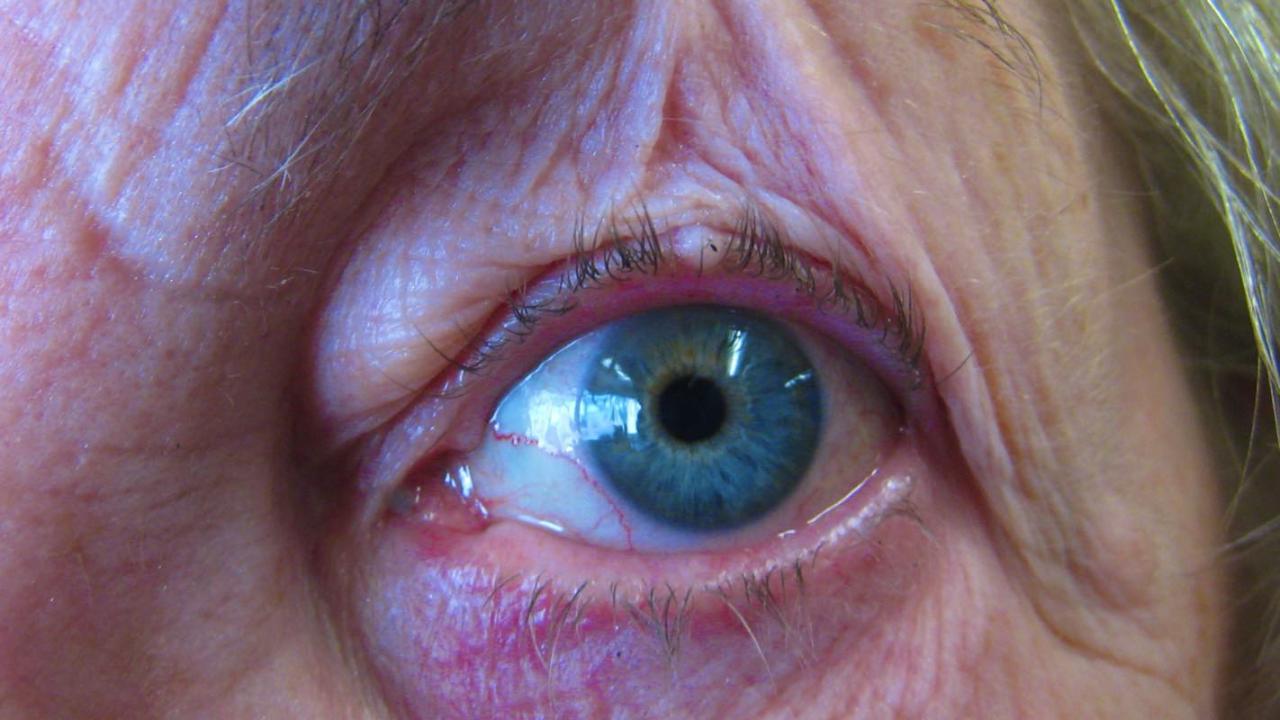
Causes of Bump on Eyelid A Comprehensive Guide
Causes of bump on eyelid? That annoying little lump on your eyelid can be more than just a cosmetic nuisance. It could signal a simple infection, an allergic reaction, or even a more serious underlying condition. This post dives deep into the various reasons why you might find yourself sporting an unexpected eyelid bump, exploring everything from common culprits like styes and chalazia to less frequent but equally important possibilities.
We’ll cover the different types of bumps, their causes (infectious and non-infectious), and when you should seek professional help. Get ready to become an eyelid bump expert!
Understanding the root cause of your eyelid bump is crucial for effective treatment. We’ll break down the possibilities, from bacterial infections like staphylococcus aureus to allergic reactions and even underlying medical conditions like blepharitis. We’ll also explore home remedies and when it’s time to call your doctor. By the end of this, you’ll be better equipped to identify and address that pesky bump.
Types of Eyelid Bumps
Eyelid bumps are a common occurrence, often harmless but sometimes indicative of an underlying condition. Understanding the different types of bumps, their characteristics, and typical durations can help you determine when professional medical attention is necessary. This information is for general knowledge and should not replace a consultation with an ophthalmologist or other qualified healthcare professional.
Styes and Chalazia
Styes (hordeola) and chalazia are two frequently encountered eyelid bumps that, while sharing some similarities, have distinct differences. A stye is an acute infection of the eyelid’s glands, usually the oil glands (glands of Zeis) or eyelash follicles (glands of Moll). A chalazion, on the other hand, is a non-infectious, chronic inflammation of the meibomian glands, which are located within the eyelid itself.Styes typically present as a painful, red, swollen bump on the eyelid margin, often accompanied by pus.
They usually resolve within a week or two with warm compresses. Chalazia, conversely, appear as a painless, firm, and often less red nodule, usually deeper within the eyelid than a stye. They can persist for several weeks or even months and may require medical intervention if they don’t resolve spontaneously. The timeline for resolution differs significantly; styes are acute and typically heal faster, while chalazia are chronic and often require longer to resolve.
Less Common Eyelid Bumps, Causes of bump on eyelid
Beyond styes and chalazia, several other less common types of eyelid bumps can occur. These can include milia, which are small, white cysts filled with keratin, often appearing on the eyelid skin. They are usually painless and typically resolve on their own, though sometimes they may require removal by a dermatologist. Another example is a xanthelasma, yellowish plaques that can develop on the eyelids, often associated with high cholesterol levels.
These are typically painless and flat, unlike styes or chalazia. Infections, such as cellulitis (a bacterial infection of the eyelid and surrounding skin), can also present as a swollen, red, and potentially painful eyelid bump, requiring prompt medical attention due to the potential for serious complications.
Eyelid Bump Characteristics
| Bump Type | Appearance | Location | Typical Duration |
|---|---|---|---|
| Stye (Hordeolum) | Painful, red, swollen bump; may contain pus | Eyelid margin | 1-2 weeks |
| Chalazion | Painless, firm nodule; less red than a stye | Within the eyelid | Several weeks to months |
| Milia | Small, white, keratin-filled cysts | Eyelid skin | Variable; may resolve spontaneously |
| Xanthelasma | Yellowish, flat plaques | Eyelid skin | Indefinite; persistent unless medically treated |
| Cellulitis | Swollen, red, potentially painful area | Eyelid and surrounding skin | Variable; requires medical treatment |
Infectious Causes

Source: med-health.net
Eyelid bumps can be a real nuisance, and sometimes they’re caused by infections. These infections can be bacterial, viral, or fungal, each with its own unique characteristics and treatment approaches. Understanding the different types of infections is crucial for effective management and preventing complications.
Bacterial Infections of the Eyelid
Staphylococcus aureus is a common culprit behind bacterial eyelid infections. This bacterium is a part of the normal skin flora, but under certain conditions – such as a break in the skin or weakened immune system – it can cause infection. S. aureus produces various toxins and enzymes that contribute to inflammation and the formation of a bump, often appearing as a stye (hordeolum) or a more serious infection like a cellulitis.
The infection typically begins with localized redness, swelling, and pain. The mechanisms involve bacterial adhesion to the eyelid tissue, followed by colonization and the production of virulence factors that damage host cells and trigger an inflammatory response. Proper hygiene practices, like frequent handwashing, are essential in preventing the spread of S. aureus.
Viral Infections Causing Eyelid Bumps
Several viruses can manifest as eyelid bumps, often accompanied by other symptoms. Herpes simplex virus (HSV), for example, can cause blepharitis or even more severe keratitis, affecting the cornea. Symptoms might include blistering, itching, and pain. Transmission of HSV typically occurs through direct contact with infected individuals or contaminated surfaces. Another example is the molluscum contagiosum virus, which causes characteristic small, pearly bumps.
So, I’ve been dealing with this annoying bump on my eyelid, and researching the possible causes – everything from a stye to an allergic reaction. It got me thinking about the complexities of the human body and how even seemingly small things can go wrong. Reading about Karishma Mehta’s decision to freeze her eggs, and the risks associated with that procedure as detailed in this article, karishma mehta gets her eggs frozen know risks associated with egg freezing , really highlighted how much we still don’t understand about our own biology.
Anyway, back to my eyelid – hopefully, it’s just a minor irritation!
This virus spreads through direct contact and often affects children. Symptoms include the appearance of small, firm, flesh-colored bumps, often without pain or significant inflammation. Appropriate antiviral medications are usually employed to treat viral infections, depending on the specific virus.
Fungal Infections of the Eyelid
Fungal infections of the eyelid, though less common than bacterial or viral infections, can still present as bumps. These infections are often chronic and may be associated with underlying immune deficiencies. The presentation varies depending on the specific fungus involved, but generally, it might include persistent redness, scaling, and possibly crusting. Treatment typically involves antifungal medications, often topical creams or ointments.
Careful diagnosis is crucial to determine the correct antifungal agent and duration of treatment. Ignoring fungal infections can lead to chronic inflammation and potential complications.
Diagnostic Pathway for Infectious Eyelid Bumps
A flowchart illustrating the diagnostic pathway for infectious causes of eyelid bumps would proceed as follows:
1. Initial Assessment Observe the bump’s characteristics (size, color, presence of pus, pain level).
2. History Taking Inquire about symptoms, recent illnesses, contact with infected individuals, and any underlying medical conditions.
3. Microscopic Examination A sample from the bump (if pus is present) can be examined under a microscope to identify the causative agent (bacteria, fungus, or virus).
4. Culture and Sensitivity Testing If a bacterial or fungal infection is suspected, a culture can be performed to identify the specific organism and determine its susceptibility to different antibiotics or antifungals.
5. Viral Testing Specific viral tests might be necessary if a viral infection is suspected, such as PCR testing for herpes simplex virus.
6. Treatment Based on the diagnostic results, appropriate treatment (antibiotics, antifungals, or antivirals) can be initiated.
Non-Infectious Causes: Causes Of Bump On Eyelid
Eyelid bumps aren’t always caused by infections. Many non-infectious processes can lead to the development of these irritating lumps, often stemming from inflammation or other underlying conditions. Understanding these causes is crucial for effective management and treatment.
The Role of Inflammation in Eyelid Bumps
Inflammation is a complex biological response to injury or irritation. In the case of eyelid bumps, inflammation manifests as redness, swelling, pain, and sometimes heat. Several inflammatory conditions can affect the eyelids, leading to bump formation. Blepharitis, a chronic inflammation of the eyelids, is a common example, often causing small bumps along the lash line. Another example is chalazion, a painless, localized swelling resulting from an inflamed oil gland within the eyelid.
So, you’ve got a bump on your eyelid – annoying, right? It could be a stye, a chalazion, or even something more serious. Thinking about underlying health issues, it’s worth remembering that some conditions, like high blood pressure or diabetes, which are listed among the risk factors that make stroke more dangerous , can also indirectly affect eye health.
Getting that bump checked out is a good idea, just like regular health checkups to monitor those stroke risk factors. Hopefully, it’s nothing to worry about, but better safe than sorry!
These conditions trigger the body’s immune response, leading to fluid accumulation and the formation of visible bumps. The severity of the inflammation and resulting bump size varies depending on the underlying cause and individual response.
Allergic Reactions Causing Eyelid Bumps
Allergic reactions are another significant contributor to eyelid bumps. Contact dermatitis, an inflammatory reaction to a substance touching the skin, is a common culprit. This could be triggered by cosmetics, lotions, eye drops, or even certain metals in eyeglass frames. The affected area becomes red, itchy, and swollen, often presenting as a bump or multiple bumps. Allergic conjunctivitis, an inflammation of the conjunctiva (the membrane lining the eyelid and eyeball), can also cause eyelid swelling and bump-like formations.
Symptoms often include itching, redness, and watery eyes, alongside the noticeable eyelid swelling. Identifying and avoiding the allergen is key to managing these reactions. For instance, switching to hypoallergenic cosmetics or removing contact lenses might alleviate symptoms.
Cyst Formation in the Eyelids
Cysts are enclosed sacs filled with fluid or semisolid material. Milia, tiny, white bumps commonly found on the eyelids and cheeks, are a classic example. These are formed when keratin, a protein produced by skin cells, becomes trapped beneath the skin’s surface. They are usually painless and harmless, often resolving on their own. Other types of cysts, such as chalazia (mentioned earlier in the context of inflammation), can also occur in the eyelids.
These are typically larger than milia and result from blocked meibomian glands (oil glands in the eyelids). Understanding the underlying mechanism—blocked glands or trapped keratin—helps in differentiating these conditions and determining appropriate management strategies.
Summary of Non-Infectious Causes of Eyelid Bumps
Several non-infectious conditions can lead to eyelid bumps. It’s important to note that the appearance and symptoms can vary, necessitating proper diagnosis:
- Blepharitis: Chronic inflammation of the eyelids, often causing small bumps along the lash line. Triggered by bacterial overgrowth, allergies, or other irritants.
- Chalazion: Painless, localized swelling from an inflamed oil gland. Characterized by a firm, often slowly developing bump.
- Contact Dermatitis: Inflammatory reaction to a substance touching the skin. Presents as red, itchy, and swollen bumps, often multiple.
- Allergic Conjunctivitis: Inflammation of the conjunctiva, causing eyelid swelling and itching, often accompanied by watery eyes.
- Milia: Tiny, white bumps due to trapped keratin. Usually painless and harmless.
Underlying Medical Conditions

Source: prasadnetralaya.com
Eyelid bumps aren’t always isolated incidents; sometimes, they’re a symptom of a larger underlying medical condition. Understanding these connections is crucial for effective treatment and managing the root cause of the problem. Ignoring the underlying condition can lead to persistent or recurring eyelid bumps.
Blepharitis and Rosacea
Blepharitis, an inflammation of the eyelids, and rosacea, a chronic inflammatory skin condition, are frequently associated with eyelid bumps. Blepharitis causes redness, swelling, and irritation of the eyelid margins, often leading to the formation of small bumps or styes. The inflammation associated with blepharitis creates an environment conducive to bacterial growth, further increasing the likelihood of bump formation. Similarly, rosacea, characterized by facial redness, flushing, and pimples, can manifest on the eyelids, resulting in inflamed bumps and pustules.
The chronic inflammation in both conditions provides a fertile ground for bacterial infection and the development of eyelid bumps. Effective management of blepharitis and rosacea often involves meticulous eyelid hygiene and, in some cases, topical medications to control inflammation.
Autoimmune Disorders
Autoimmune disorders, where the body’s immune system mistakenly attacks its own tissues, can sometimes contribute to eyelid bumps. Conditions like lupus or Sjögren’s syndrome can cause inflammation in various parts of the body, including the eyelids. This inflammation can manifest as eyelid swelling, redness, and the formation of bumps. The immune system’s attack on the eyelid tissues can lead to a range of symptoms, and eyelid bumps are just one potential manifestation.
Treatment focuses on managing the underlying autoimmune disorder and reducing inflammation.
Medications and Systemic Illnesses
Certain medications and systemic illnesses can also indirectly contribute to eyelid bumps. Some medications, particularly those that suppress the immune system or have side effects involving inflammation, might increase susceptibility to infections and the development of eyelid bumps. Systemic illnesses like diabetes, which can impair immune function, might also increase the risk. For example, a patient with poorly controlled diabetes might experience a higher incidence of infections, including those affecting the eyelids, leading to bump formation.
In these cases, managing the underlying medical condition and addressing any medication-related side effects is crucial.
Comparison of Underlying Medical Conditions
| Condition | Symptoms | Relationship to Eyelid Bumps |
|---|---|---|
| Blepharitis | Redness, swelling, irritation of eyelid margins, crusting | Inflammation creates environment for bacterial growth, leading to bump formation. |
| Rosacea | Facial redness, flushing, pimples, pustules | Inflammation on eyelids can result in inflamed bumps and pustules. |
| Autoimmune Disorders (e.g., Lupus, Sjögren’s) | Variable, depending on the specific disorder; can include eyelid swelling, redness, and dryness. | Systemic inflammation can affect eyelids, leading to bump formation. |
| Medications/Systemic Illnesses (e.g., Immunosuppressants, Diabetes) | Variable, depending on the specific medication or illness; can include impaired immune function and increased susceptibility to infection. | Weakened immune system or increased inflammation can increase the risk of eyelid infections and bump formation. |
Home Remedies and When to Seek Medical Attention
Dealing with a bump on your eyelid can be unsettling, but thankfully, many are minor and treatable at home. However, knowing when to seek professional medical help is crucial to prevent complications. This section Artikels effective home care strategies and explains when a doctor’s visit is necessary.
Simple home remedies can often alleviate the discomfort and promote healing for minor eyelid bumps. However, it’s vital to understand that these remedies are not a substitute for professional medical advice, especially if the bump worsens or shows signs of infection.
Warm Compresses
Applying a warm compress is a common and often effective home remedy for eyelid bumps. The warmth helps to increase blood flow to the area, promoting healing and reducing inflammation. It can also help to draw out any pus or fluid from a stye or chalazion.
So, that annoying bump on your eyelid? It could be a stye, a chalazion, or even an allergic reaction. Thinking about it, it made me remember reading about Monali Thakur’s hospitalization; check out this article on how to prevent respiratory diseases like the one she experienced: monali thakur hospitalised after struggling to breathe how to prevent respiratory diseases.
Anyway, back to that eyelid bump – if it’s persistent, definitely see a doctor!
To properly apply a warm compress:
- Clean a soft washcloth with warm (not hot!) water. Wring out excess water to avoid dripping.
- Gently fold the washcloth and place it over the affected eyelid for 10-15 minutes.
- Repeat this process several times a day, ensuring the water remains comfortably warm. Never use boiling water or excessively hot water.
- After each application, discard the used washcloth and use a clean one for the next application.
Imagine the warm compress as a gentle hug for your eyelid, soothing the inflammation and encouraging healing. The warmth helps to soften any hardened material within the bump, making it easier to drain if necessary.
When to Seek Medical Attention
While many eyelid bumps resolve on their own with home care, certain situations demand immediate medical attention. These include:
- Severe pain that doesn’t improve with home remedies.
- Vision changes, such as blurred vision or double vision.
- Persistent swelling or redness that spreads beyond the initial bump.
- A high fever accompanied by the eyelid bump.
- The appearance of new bumps or a worsening of the existing bump despite home treatment.
- A bump that lasts longer than a week without improvement.
Ignoring these warning signs can lead to complications, such as a more serious infection or permanent vision impairment. Prompt medical attention is crucial in these cases.
Diagnostic Procedures
A doctor will typically diagnose the cause of an eyelid bump through a physical examination. They will carefully assess the bump’s size, appearance, and location, as well as your overall health history. In some cases, further diagnostic procedures may be necessary:
- Visual Examination: The doctor will visually inspect the eyelid and surrounding area to determine the characteristics of the bump.
- Imaging Tests: In certain instances, imaging techniques like ultrasound or MRI may be used to get a clearer picture of the bump’s internal structure, particularly if it’s deep-seated or unusually large.
- Biopsy: If there’s concern about a more serious condition, a small tissue sample may be taken for microscopic examination to rule out malignancy or other underlying conditions.
These diagnostic methods allow the doctor to accurately identify the cause of the eyelid bump and recommend the most appropriate treatment plan.
Summary

Source: mrdavidcheung.com
So, next time you feel that unwelcome bump on your eyelid, remember the wealth of information we’ve explored here. From simple styes to more complex underlying issues, understanding the potential causes is the first step to finding relief. While home remedies can be helpful for minor issues, persistent or severe symptoms always warrant a visit to your doctor or ophthalmologist.
Take care of those peepers!
User Queries
What’s the difference between a stye and a chalazion?
A stye (hordeolum) is a painful, pus-filled infection of a hair follicle or oil gland in the eyelid. A chalazion is a painless, non-infectious swelling of an oil gland. Styes are often red and tender, while chalazia are usually less inflamed.
Can I pop a stye or chalazion myself?
No! Squeezing or popping either can worsen the infection or lead to scarring. Warm compresses are a better approach, and you should consult a doctor if it doesn’t improve.
How long does it usually take for an eyelid bump to go away?
It depends on the cause. A stye might clear up within a week or two with home care. Chalazia can take longer, sometimes several weeks or months. More serious conditions may require longer treatment.
When should I see a doctor about an eyelid bump?
See a doctor if the bump is severely painful, affects your vision, is accompanied by fever, doesn’t improve after a week or two of home care, or recurs frequently.
